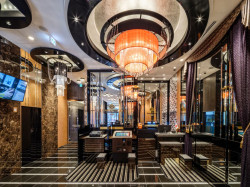
Originally published on metropolis.co.jp on January 2013

FAIL
- Officials at the Nuclear Regulation Authority were forced to admit that every single one of their radiation-dispersion forecast maps is “riddled with errors.”
- Police believe a weightlifting accident caused the death of a 23-year-old Chiba man who was found “with an 80-kilogram barbell on his neck inside a training room” at a local gym. Gee, ya think?
- Local broadcasters say they received 236 phone calls complaining about poor reception last month following a 30-second test of TV signal transmissions from Tokyo Skytree.
- A study conducted by the Saitama municipal government found that the lighting at one of the two home stadiums used by the Urawa Reds is too dark for J. League standards.
BARBARIANS AT THE GATE
- As part of its efforts to stimulate the economy, the BOJ will offer “foreign-currency loans to foreign companies.”
- Among the tips offered in the NPA’s first-ever manual on interrogation are “calling suspects by name to help establish a comfortable atmosphere… and talking to suspects calmly and slowly.”
- Authorities suspect that fishermen are responsible for polluting a 6km stretch of coastline in Chiba with… sardines. Catches of the fish have been extremely abundant this winter.
- Bottom Story of the Week: “Are Lady Pros Important in the World of Go?” (via The Mainichi)
BREAKTHROUGHS
- Researchers at Hitachi Zosen and Sumitomo Chemical have collaborated on a method of removing debris and salt from farmland ravaged by the March 11 tsunami.
- Scientists at the University of Tokyo are using origami techniques to fold sheets of cells in an effort to “build blood vessels or even whole organs.”
- It was reported that NHK is developing a broadcast format called Super Hi-Vision, which would boast a whopping 33 million pixels. That’s about 16 times more vivid than the existing HDTV standard.
- The newly opened Asakusa Culture Tourist Information Center, whose exterior resembles “one-story bungalows stacked on top of each other,” was one of 1,008 works to receive the 2012 Good Design Award from a Japanese industry association.
UP IN THE AIR
- Officials at the transport ministry are considering a plan to extend the 6am-11pm timeslot for takeoffs and landings at Narita Airport, but only for “relatively quiet aircraft.”
- The head honchos at JAXA say they want to drastically cut costs on development of their next-generation rocket. Apparently, the ¥10 billion price tag of the previous model, the H-IIA, “[made] it hard for Japan to attract international satellite launch orders.”
- One unforeseen aspect of Japan’s shift toward renewable energy: a lack of workers who are qualified to install solar panels.
- The Kitakami mountain range in Iwate and the Sefuri range bordering Fukuoka and Saga are among the sites under consideration for a massive particle accelerator to be built by Japan, the US and Russia.
AND FINALLY…
- Former Prime Minister Naoto Kan and three aides were injured in a one-car crash in Fuchu, western Tokyo.
- Gas appliance manufacturer Paloma Corp and a repair company were ordered to pay ¥120 million to the family of an 18-year-old Tokyo college student who died of carbon monoxide poisoning due to a faulty water heater.
- The education ministry says the number of public-school teachers working on a temporary or part-time basis has increased from 84,000 in 2005 to 113,000 this year.
- A survey by the welfare ministry found that more than half of homeless people in Japan who are under the age of 35 had previously worked as “non-regular” employees.
Compiled from reports by AP, Japan Today, The Japan Times, Jiji, The Tokyo Reporter, Japan Probe, The Mainichi, Daily Yomiuri, AFP, Reuters and Kyodo







